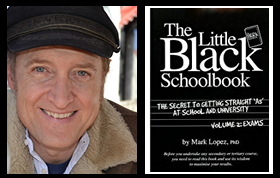Dr Mark’s The Meaning in a Nutshell
Alfred Hitchcock (director) Rear Window (1954) | film
Alfred Hitchcock (director), Rear Window (1954)
The film Rear Window (1954) is a crime thriller and murder mystery that was directed by Alfred Hitchcock, and written by John Michael Hayes who adapted the short story by Cornell Woolrich ‘It had to be murder’ (1942) to the screen with the assistance of Hitchcock.
While convalescing with a broken leg at home in his apartment, a news magazine photographer who specialises in covering international stories and adventurous or dangerous assignments, observes the lives of his neighbours whose apartment rear windows face a shared courtyard. Tempted by the fascinating display of humanity before him, he becomes a voyeur who eventually solves a crime. This scenario allows the filmmakers to explore the nature of voyeurism, which they treat with ambivalence. Voyeurism can be either for amusement or titillation, or it can be public spirited, a form of protectively keeping watch over the wellbeing of one’s neighbours. In this case, the public-spirited voyeurism solves a murder mystery. While voyeurism (or ‘people watching’) is presented as an almost universal tendency that is enjoyable, the film suggests it can go too far if it involves binoculars or telephoto lenses or secretly studying the lives of others too closely and continuously.
Meanwhile, the film also provides a commentary on the experience of being in a cinema audience and on the nature of filmmaking. This is achieved in the way that the cinema audience is invited to express their voyeuristic curiosity through being positioned to identify with the curiosity expressed by Jeff and most of the other main characters who visit his apartment. The rear window through which he views his neighbours is like a cinema screen that presents stories to watch. The voyeuristic tendency is therefore compared to the cinematic experience, with this film providing an example. In addition, the cinema audience is invited to see Jeff, the voyeuristic photographer, as being like a filmmaker who offers up stories derived from humanity for audiences to observe for their interest and pleasure.
The film also provides a critical commentary on the experience of marriage, with the film presenting men as seeing marriage as a compromise and women as seeing marriage as a fulfilment, with the view that men (especially those men who are comfortable with themselves and not needy regarding women) have to be tricked or caught or tempted or somehow manoeuvred into marriage. While Jeff and Lisa’s sometimes rocky romance ends with marriage being inevitable, most of the windows in the courtyard display various stages of courtship and matrimony that present marriage as an antidote to loneliness but not as a path to eternal happiness.
In addition, the film presents a critical commentary on how people who live in close proximity in densely populated urban environments are usually alienated from each other and live almost isolated from their neighbours. The film laments a loss of the neighbourliness found in small towns and communities, urging people to befriend their neighbours and care for them.
Student resources by Dr Mark Lopez
© Mark Lopez 2019 ALL RIGHTS RESERVED
The purpose of the concise notes of Dr Mark’s The Meaning in a Nutshell is to provide much needed help to students seeking to unlock the meaning of the texts with which they have to deal. (More elaborate notes are provided in lessons as part of my private tutoring business.)
Subject: Rear Window meaning, Rear Window themes, Rear Window analysis, Rear Window notes
© Mark Lopez 2019 ALL RIGHTS RESERVED
